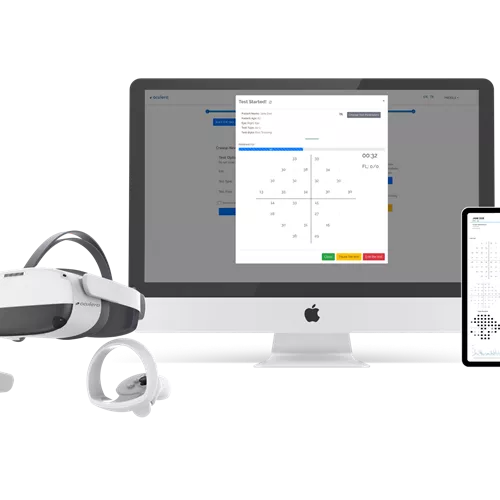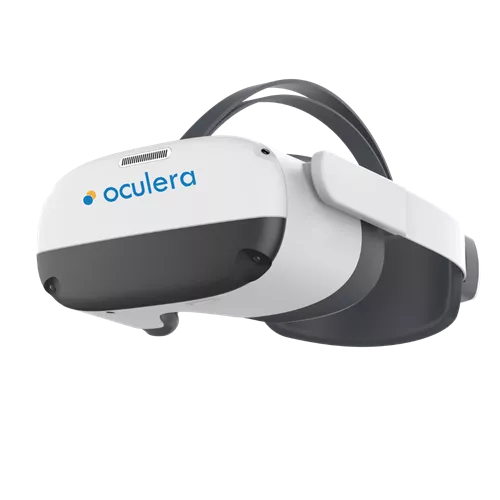Introducing Oculera Visual Field Analyser
The Oculera Visual Field Analyser uses state-of-the-art technology to detect and diagnose early glaucoma, AMD, scotomas or brain abnormalities.
Designed to be comfortable for patients, applying the key concepts and golden rules of perimetry testing via its ground-breaking VR headset. The Oculera Visual Field Analyser is the only Class IIa MHRA registered Virtual Reality Visual Field Analyzer available in the UK.

